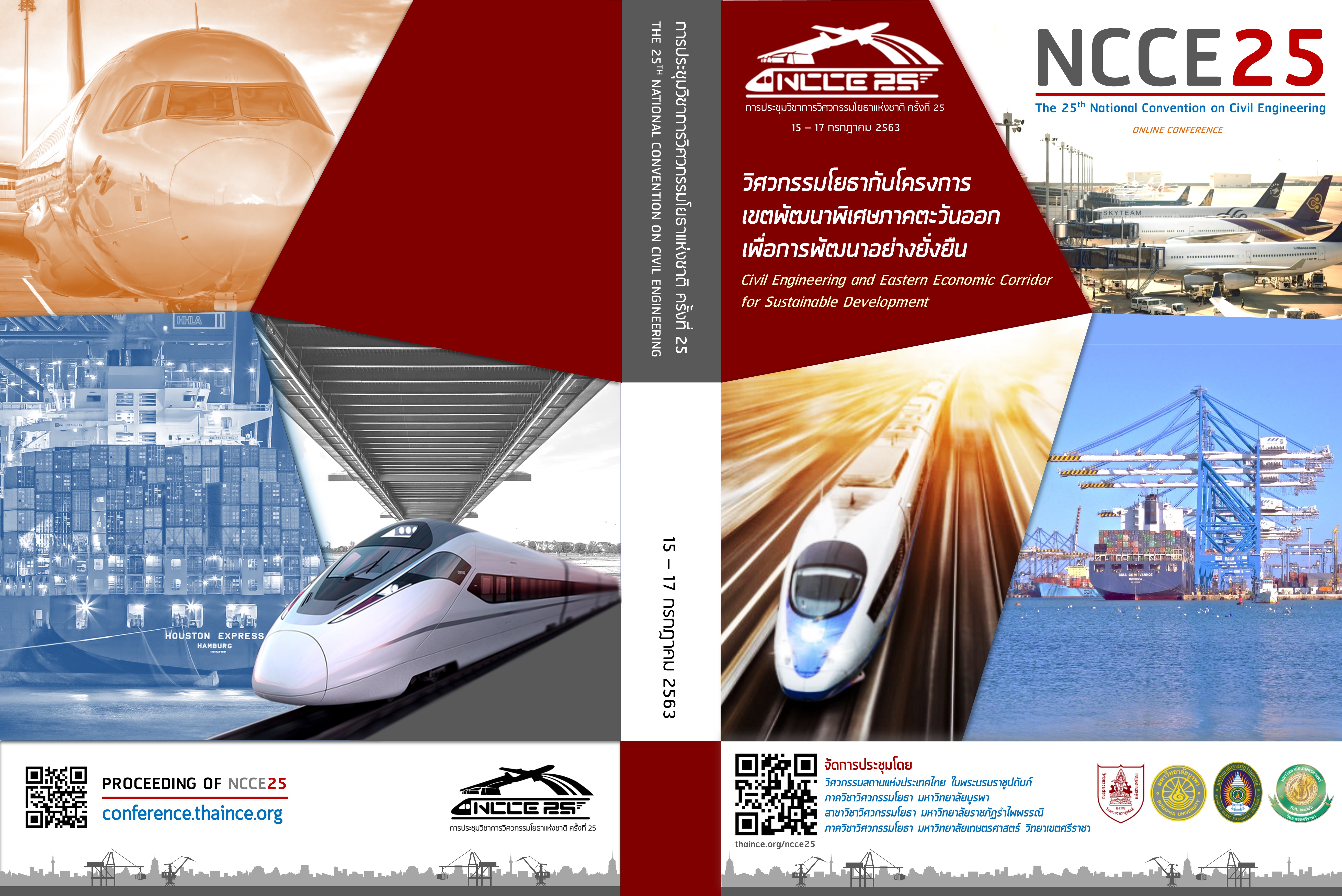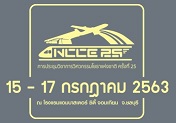Effect of Addition of Free Lime in Fly Ash on Chloride Binding Capacity of Paste with Fly Ash and Limestone Powder
Keywords:
Free lime, Fly ash, Limestone powder, ChlorideAbstract
The aim of this research was to study the effect of free lime (fCaO) in the fly ash on chloride binding capacity of ordinary Portland cement (OPC) paste replaced by fly ash and limestone powder. The original fly ash added fCaO in order to the fly ash having different amounts of fCaO. The results showed that the total chloride content of paste of OPC replaced with 10% limestone powder was less, while the chloride binding capacity was higher when compared with OPC paste. Besides, paste replacing OPC with 30% fly ash showed the total chloride content and the fixed chloride ratio were similar to that of OPC paste. In addition, paste that replaced OPC with 20% fly ash together with 10% limestone powder gave the total chloride content close to, but the fixed chloride ratio was less tendency when compared with OPC paste. Finally, the different amounts of fCaO in fly ash did not affect the total chloride content and the chloride binding capacity of the pastes.
Downloads
References
[2] T. Sumranwanich, (2004). Chloride Binding Capacity of Cement – Fly Ash Past and Simulation of Chloride Profile in Concrete. Ph.D. Thesis, Civil Engineering, School of Civil Engineering and Technology, Sirindhorn International Institute of Technology, Thailand.
http://digital.library.tu.ac.th/tu_dc/frontend/Info/item/dc:114613
[3] P. Supattatum, B. Chatveera and S. Tangtermsirikul, S. (2000). Chloride Binding Capacity of Cement - Fly Ash Past. Journal of The Engineering Institute of Thailand, 4, pp. 62-66.
[4] S. Plang-ngern and S. Tangtermsirikul, (2000). Chloride Binding Capacity in Fly Ash Concrete. Journal of The Engineering Institute of Thailand, 2, pp. 1-8.
https://ph02.tci-thaijo.org/index.php/eit-researchjournal/article/view/179816/127674
[5] P. Chindaprasirt, (2000). Fly ash in concrete (The updated edition). Thailand Concrete Assocoation.
[6] Tarun R. Naik, Shiw S. Singh, Mohammad M. Hossain, (1995). Properties of high performance concrete systems incorporating large amounts of high-lime fly ash. Construction and Building Materials Journal, 9, pp. 203.
https://www.sciencedirect.com/science/article/abs/pii/0950061895000095?via%3Dihub
[7] N. Voglis, G. Kakali, E. Chaniotakis and S. Tsivilis, (2005). Portland-Limestone cement their properties and hydration compared to those of other composite cements. Cement & Concrete Composites Journal, 27, pp. 191–196.
https://www.sciencedirect.com/science/article/abs/pii/S0958946504000216
[8] P. Chalattunyakij, P. Krammart, K. Kaewmane, S. Tangtermsirikul, (2012). Effect of Addition of Free Lime in Fly Ash on Expansion and Weight Loss in Sulfate Solution of Mortar with Fly Ash and Limestone Powder. Journal of industrial technology, 8, pp. 37-48.
http://j.cit.kmutnb.ac.th/en/paper-view/130
[9] B. Bissonnette, P. Pierre and M. Pigeon, (1999). Influence of Key Parameters on Drying Shrinkage of Cementitious Materials. Cement & Concrete Research, 29, pp. 1661.
https://www.sciencedirect.com/science/article/abs/pii/S0008884699001568
[10] T. Sinsiri, (2005). Effect of Particle Size and Shape of Fly Ash on Pore Structure and Permeability of Blended Cement Paste. Ph.D. Thesis, Civil Engineering, King Mongkut’s University of Technology Thonburi, Thailand.
http://eng.sut.ac.th/ce/ccbm/paper/doctor/theerawat/abstract.pdf
Downloads
Published
How to Cite
Issue
Section
License
บทความทั้งหมดที่ได้รับการคัดเลือกให้นำเสนอผลงานในการประชุมวิชาการวิศวกรรมโยธาแห่งชาติ ครั้งที่ 25 นี้ เป็นลิขสิทธิ์ของ วิศวกรรมสถานแห่งประเทศไทย ในพระบรมราชูปถัมภ์



